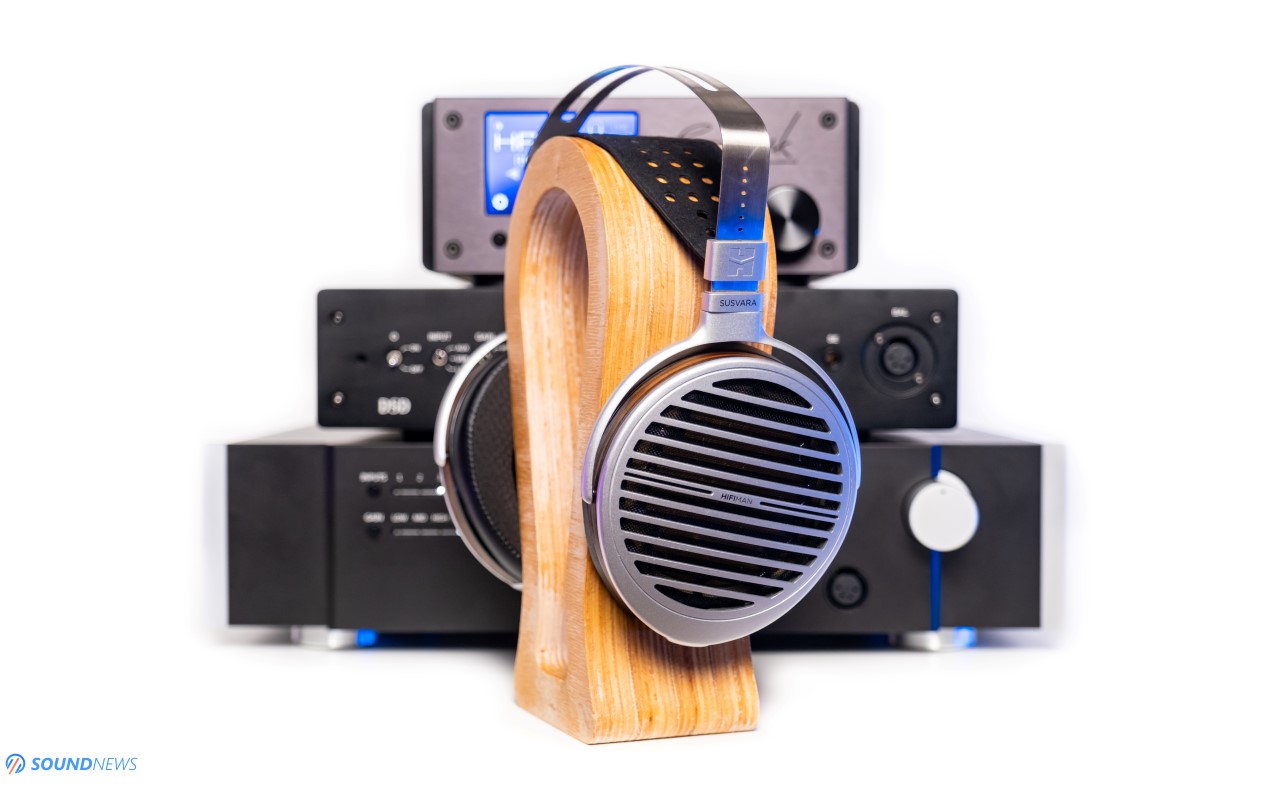Flux Lab Acoustics VOLOT Review – A Giant Among Us
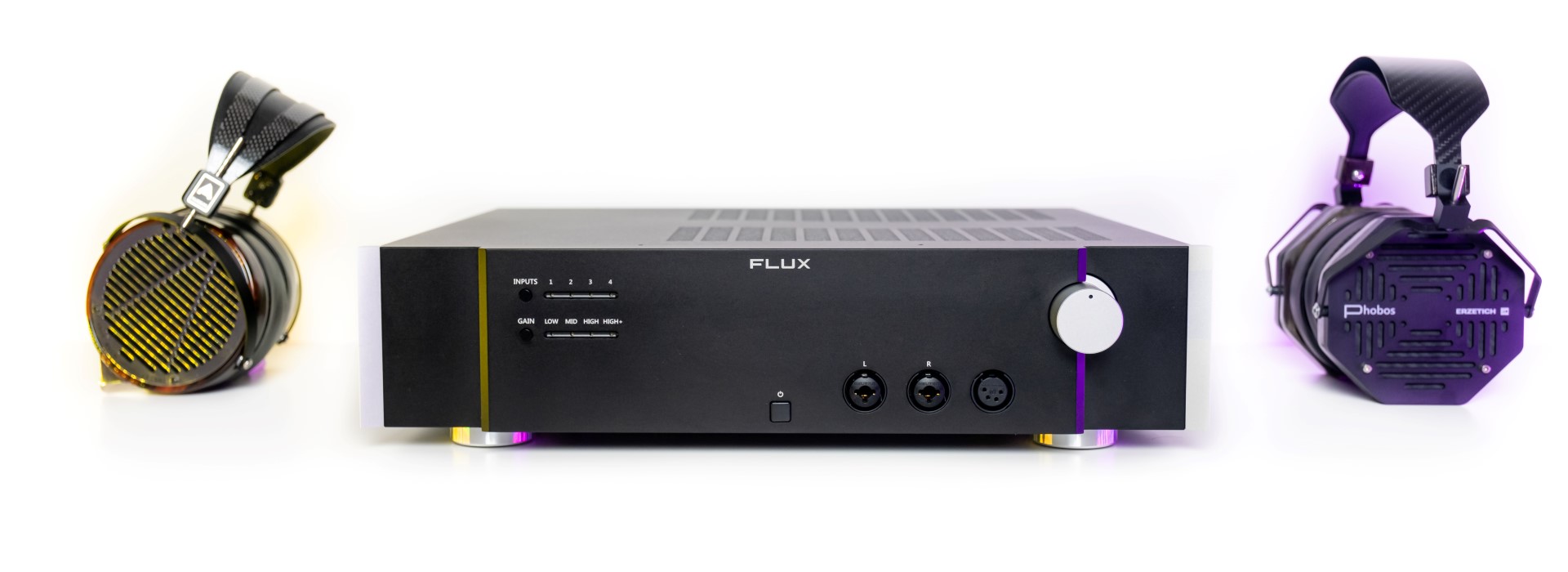
My Video Review:
Name the first grandiose and imposing thing that dictates your imagination. Contemplate in intimacy the detail that seduced your thoughts in a journey across continents and oceans. If among the symbols of timeless grandiloquence, you have listed the Colossus of Rhodes, the Great Wall of China, the Colosseum, or the Statue of Genghis Khan…then you are not alone in this exercise of the mind. From ancient times, regardless of ideology, we have been irretrievably attracted by the great landmarks of civilization. The Colossus of Rhodes is the statue of Helios, the sun god, a formidable embodiment of Greek mythology, an architectural marvel of antiquity that, although forever lost, remained in our collective mind due to its colossal proportions. Volot is a corresponding concept born in the Eastern Slavic mythology.
VOLOTs were majestic and mythical giants that roamed Earth from the beginnings of time. They descended from the Ural Mountains and are considered as precursors of human civilization. They possessed unlimited strengths uprooting trees with their pinkie and bending mountains to their will. They were extremely powerful and wise. They vanished exactly as they came, never to be seen again. According to an ancient text-book, called Sandu’s Journal, one giant would reappear a millennia later and would be knocking at my front door in May 2021. Due to some unforeseen circumstances (read: horrible shipping companies) what was May, moved to August and finally a titan paid me a visit. Instead of flinging mountains left to right, he was flinging my headphones with an evil smile on his face. The dust settled, the battle concluded, one Volot remained standing all my headphones became his slaves.
Headphone amplifiers are coming and going on a monthly basis around here, some are stirring my curiosity, some my attention and only a handful of units my full admiration. Flux Lab Acoustics FA-10 was one of the very few that didn’t go back and that’s because it had something to say. Flux Lab Acoustics embraced different ideas to most headphone amp makers and you could easily feel that while listening to their brainchild. They were never here for a quick money grab; as they still had something to prove. The mighty headphone amp that I will be testing today pays homage to their FA-10, while improving every single component to overkill levels of power and control. As of right now, Volot seems to portray the biggest, the meanest, the heaviest and the most powerful headphone amplifier that roamed the Earth and his story has just begun.

Unboxing Experience
I’ve tested quite a few headphone amplifiers, some came in smaller, other in bigger and heavier boxes, but I wasn’t prepared for a titan lurking inside this package. I’ve immediately remembered my years with the Audio-GD Master-9 that occupied 1/3 of my desktop space, as Volot is very much the same. Compared to all other amplifiers that I’ve received so far, Volot came in a triple-boxed configuration, it was tightly wrapped in two pieces of foam and I can only congratulate them as you can never be too careful with high-end electronics during shipping. Underneath it, a smaller card-board box holds a power cable and that is everything you’ll find inside. It didn’t come with a user manual or additional paper work, but considering it’s only a headphone amplifier with no additional features…it’s okay as it is.
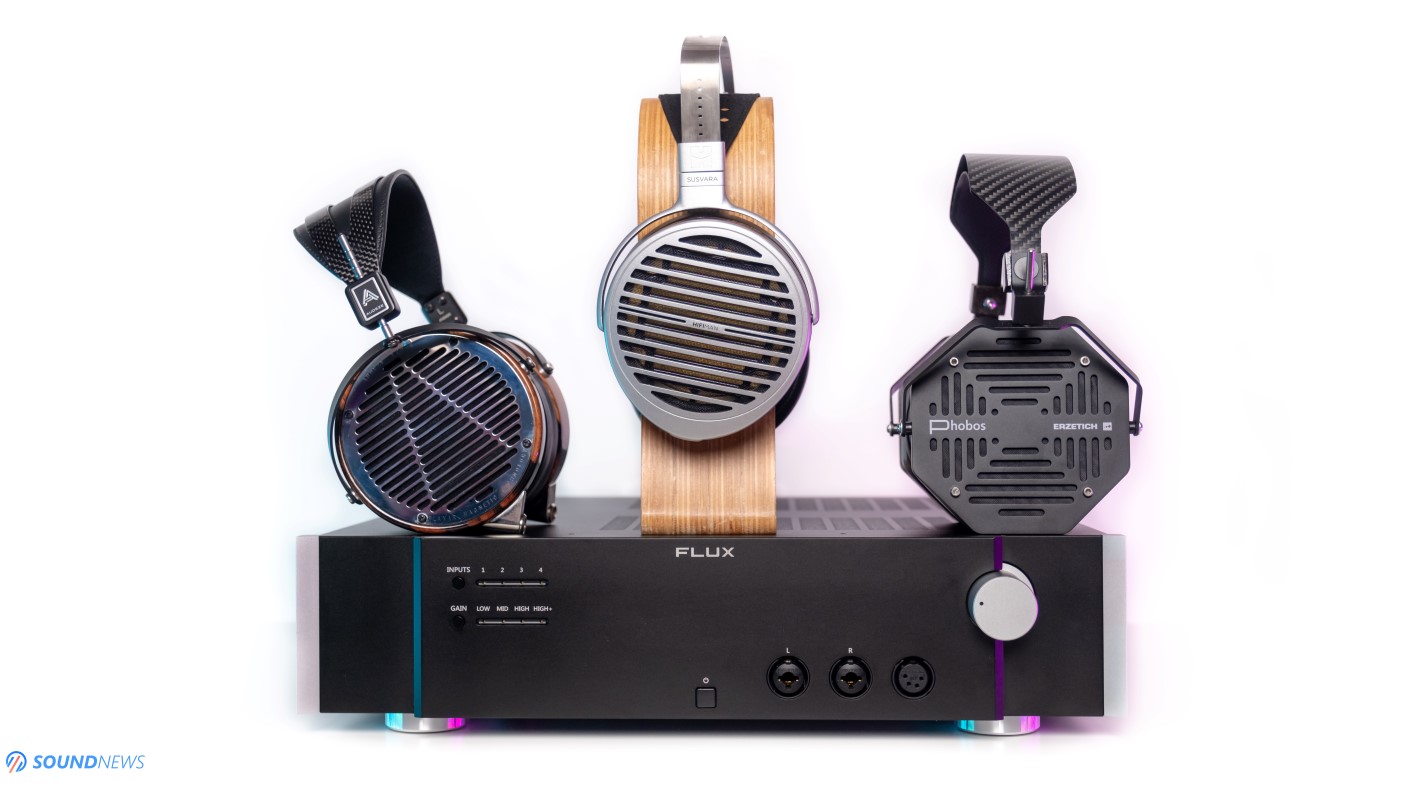
Design & Build Quality
If I’m discarding my former Audio-GD Master 9, simply put, Volot is the biggest, the meanest and the heaviest headphone amplifier I put my hands on. It’s a beast of an amp and all my power and integrated amplifiers are crawling in fear, dwarfed by its sheer size and weight. If you are thinking about getting it, make sure you can accommodate it in a well-ventilated area, without putting anything on top of it. Equipped with 3 toroidal transformers, with plenty of bipolar transistors and with some of the biggest capacitors I’ve seen, pumping iron and always working in Class-A, it consumes a lot of juicy watts and dissipates a lot of heat. I recommend never blocking its air vents and never put bottles of beer nowhere near it…for a much longer service.
Volot is not only big and extremely bold looking, it’s also…simple, elegant and quite modern looking, it’s a gentle giant in a way. Its white LED lights aren’t that visible in late night listening sessions, plus it’s very easy to operate single-handedly due to a clean front panel. I’m glad that Flux used a time-tested design and form factor and didn’t go with different aesthetics. It uses the Atlas case (another titan, member of the Flux team) that proved to be sturdy and reliable.
Flux armed it with a thick aluminum front panel that should stop all wireless interference, plus I really like massive and bold looking volume wheels. It offers plenty of resistance and that clicking noise is pleasant to hear, as my Benchmark HPA4 does the same and uses similar analog relays for a perfect volume matching. Weighting some serious 12.5 kilos or slightly more than 27 pounds, some heavy-duty metal feet would be needed to support all that weight and this is exactly what Flux guys did. I really don’t see a point of replacing such beautiful machined metal feet with other ones, it would be pointless…unless you fancy those black Viablue QTC spikes that are matching with its matte-black case. That would look classy and really badass.
Overall, Volot looks like a massive amplifier, it is built like a tank, it screams high quality craftsmanship and I wish more companies would adopt higher-quality standards. It looks more industrial than refined to me, with straight lines and bold looks. Forget about WAF, it is out of the window with this one, it is simply too big, way too imposing and if you are planning on getting one, stretch your budget a little and get a nice gift to your lady. She deserves it.
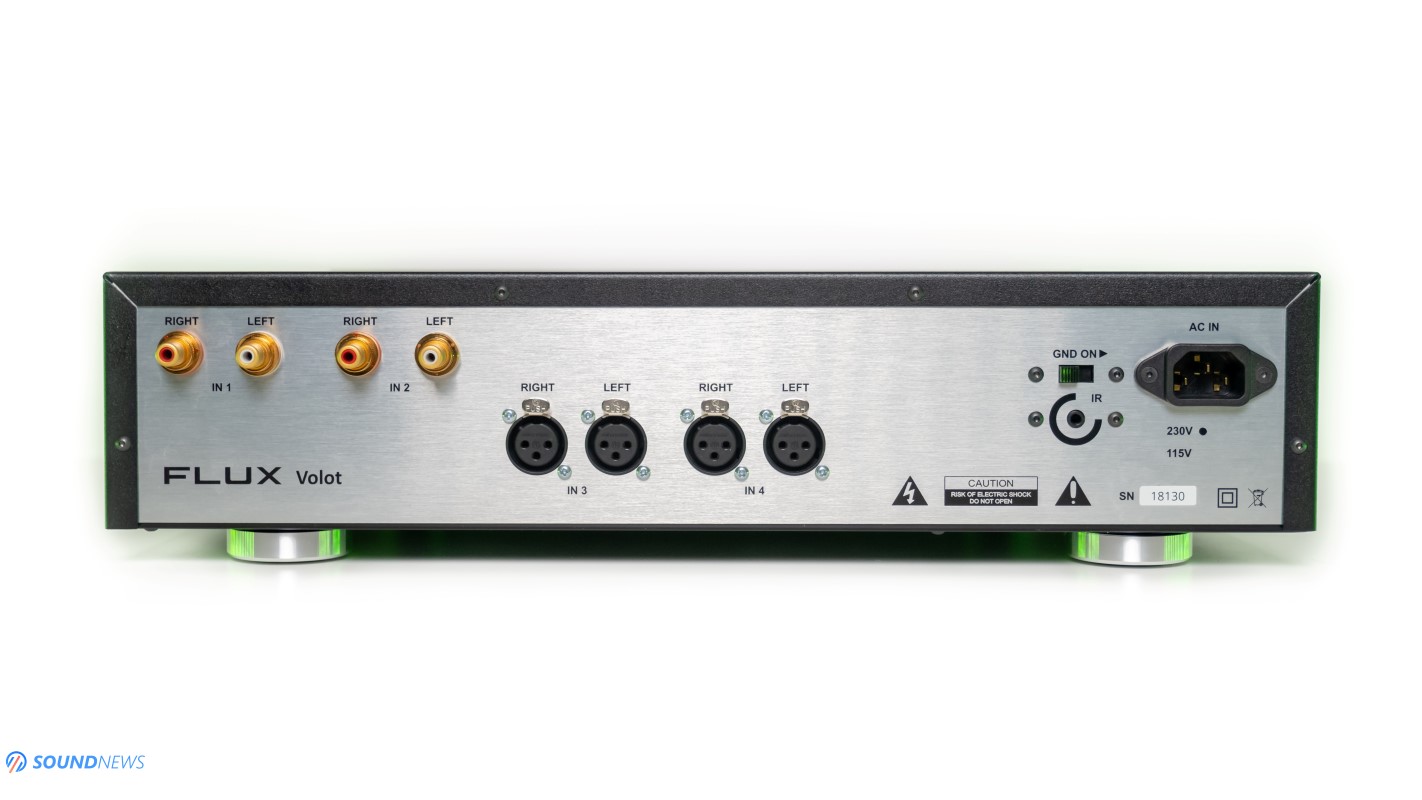
Controls & Connectivity
Volot uses a milled front panel and the rest of its body seems to be wrapped in a matte-black metal case. Exactly in the middle you’ll find a power button, to its left you can see an input and a gain selector and to its right a volume wheel and three headphone jacks. There is a regular 4-pin XLR jack and the other two can be used as double 6.35mm (1/4”) jacks or as a balanced 3-pin XLR output. Seeing that High+ gain setting makes me really warm inside and I wonder if I should give it a try with some harder to drive headphones. So exciting!
Ever wondered why I’m using my Benchmark HPA4 in basically all my DAC comparisons? Because it has four analog inputs, two pairs of single ended and two pairs of balanced inputs, so I can easily compare two or even four sources at once. Flux Labs Acoustics followed my advice and armed it with the same configuration! Normal people use only a single DAC for all their Hi-Fi needs, but there are crazier dudes such as myself that use at least 3 DACs on a daily basis, due to different needs, maybe to their tonality, maybe to induce a specific mood, or just because I’m using several headphone and stereo setups and I’m genuinely glad that Volot offers so many analog inputs.
It is important to note that the Flux team used higher quality CMC connectors and XLR jacks everywhere, I’m spotting Neutrik jacks and a high-end Furutech IEC inlet. It screams high craftsmanship with a high attention to the smallest details. On its back I’m also spotting an IR sensor for remote control. It seems that they will be offering a remote control down the road. Very curious about this one, hopefully more info will be revealed sooner rather than later.
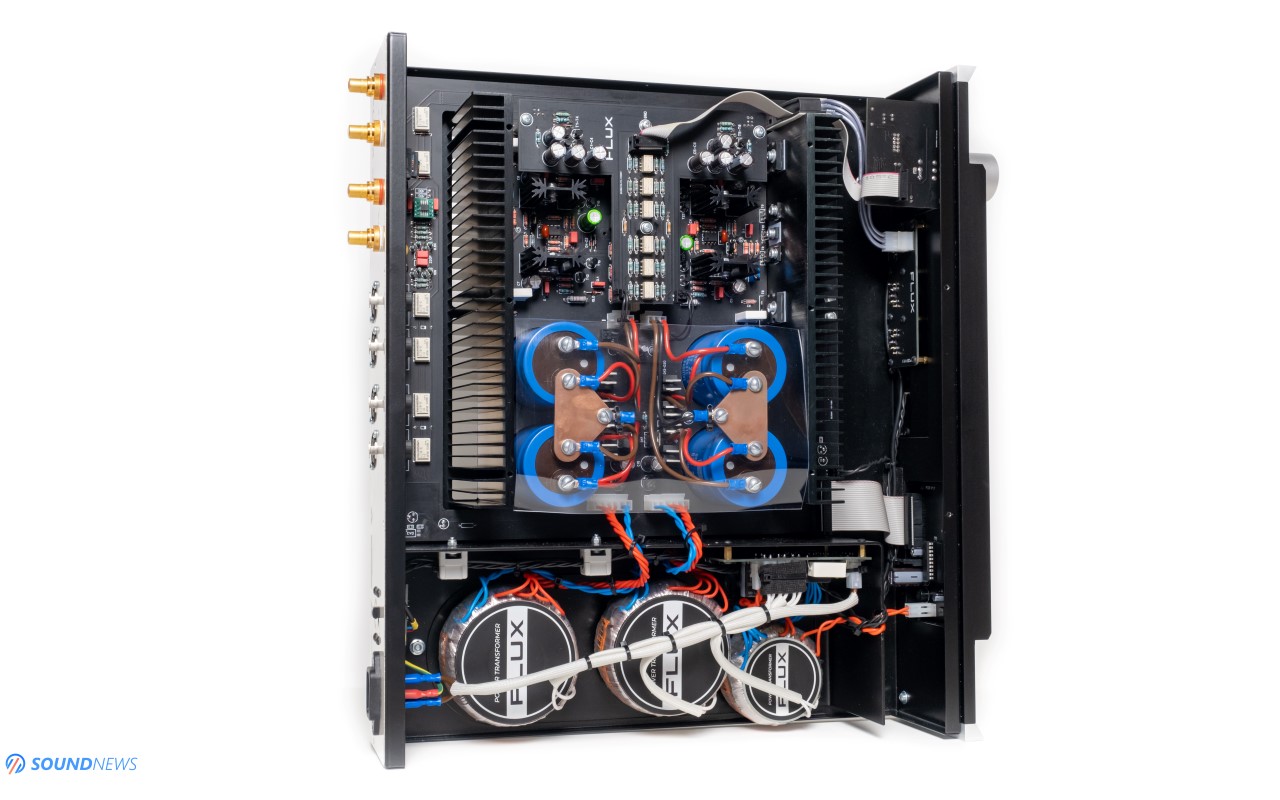
Tech Inside a Giant
A word of advice first, I am going to show you several pictures and video B-Rolls with its internal components, but I strongly suggest never messing inside it. There is a reason a film protector is put on top of those XL-sized Chemi-Con capacitors. One mistake could be your final, those are storing lots of power and could be potentially lethal. My second advice is to never block its air vents, it gets hot after a few hours of use and blocking them could cause some damage to the unit.
The blue caps (63V / 22.000 uV) are using some of the thickest cables, those are storing several times the power of their FA-10/PRO units for some crazy dynamic swings, I can already feel the impact and the bass kick coming out of this unit. From a single toroidal transformer on the FA-10, Flux put another two for some Golden Power TriForce! One for your left, one for your right channel and the last one powers its protection circuits, all the inputs, outputs and the gain settings (basically its UI).
Wait a second…protection circuits? That’s right my dear friends! Volot is one of the very few headphone amplifiers that offers you: over-voltage and short-circuit protections that will save your precious headphones from any damage and most importantly your hearing in case things are going sideways. I’m hearing that there are headphone amp models that fried headphones for good, but you should never worry with the Volot on your table.
It isn’t a novelty to anyone that the power output of an amplifier comes from its transformers and after seeing their size and power ratings, it’s already clear to me that Volot will be considerably more powerful compared to anything they’ve done until today. In all honesty, I never experienced such a robust output-stage in a headphone amplifier, it looks more like an overkill integrated or power amplifier for your passive loudspeakers. Volot uses Toshiba bipolar transistors at its output stage, that are being fed by 80 Volt rails. The amp stage looks similar to that of FA-10, but everything was dialed up to eleven. Volot might offer you the same 16 Watts in 32 Ohm, but its quiescent current is 2.5 times higher, meaning that Volot works in a deeper Class-A mode, allowing it to send the tiniest signals with a much higher accuracy. A Watt is a Watt, right? Erm…not really. It seems that Volot is a (very) different beast and it should easily drive even the heaviest loads without sweating.
Flux team added a few more high-precision analog relays and those are even of a higher quality, meaning that Volot is more precise in its math and will offer you a better volume matching. The higher-grade materials lowered its THD by 4 times compared to FA-10 and as such it should perform at a higher level to everything they’ve done until now.
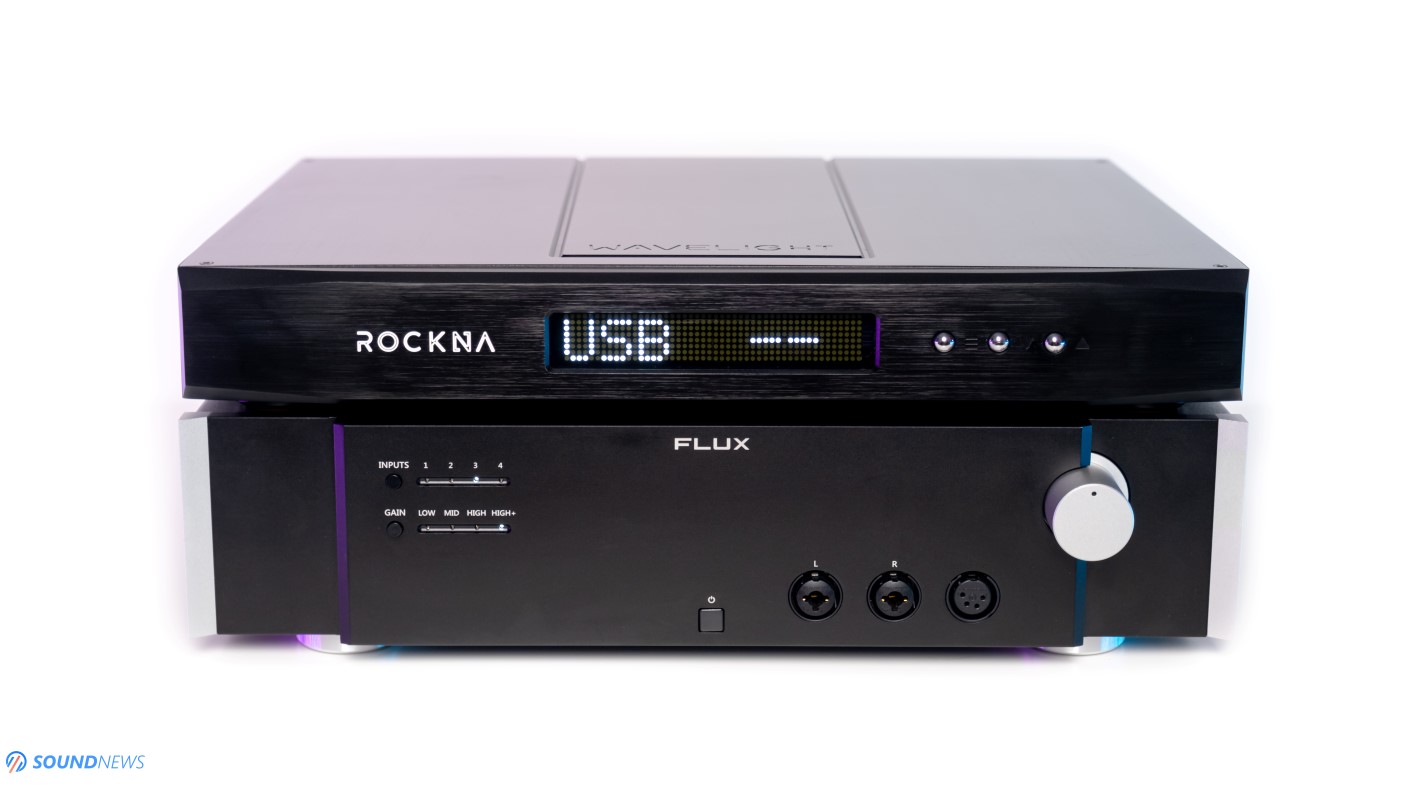
Test Equipment
Flux Lab Acoustics VOLOT is a high-end headphone amplifier and that is precisely why I decided testing with every headphone that I have at my disposal. Firstly, I will be testing its noise-floor via ultra-sensitive IEMs, I’ll move to portable over-ear headphones and lastly all sorts of desktop headphones will be tested with it, ranging from affordable dynamic headphones to high-end planar-magnetics. In some of the latest parts of this review I’ll be driving the hardest headphone I have in my stable: the notorious Hifiman Susvara.
A high-end amp, would need a high-end DAC to shine at its best and that’s why it was connected mostly to a Rockna Wavelight, to a Musician Aquarius and later on to a Matrix Audio Element X and Gold Note DS-10 Plus.
Even at this point, I don’t think there are matching headphone amplifiers that could brawl with it for a few rounds, nonetheless I’ll be comparing it lately with my daily driver Benchmark HPA4 and then with its smaller brother Flux Lab Acoustics FA-10…just for fun.
Alright fellows, my body is begging for some music, so let’s hit some eardrums!
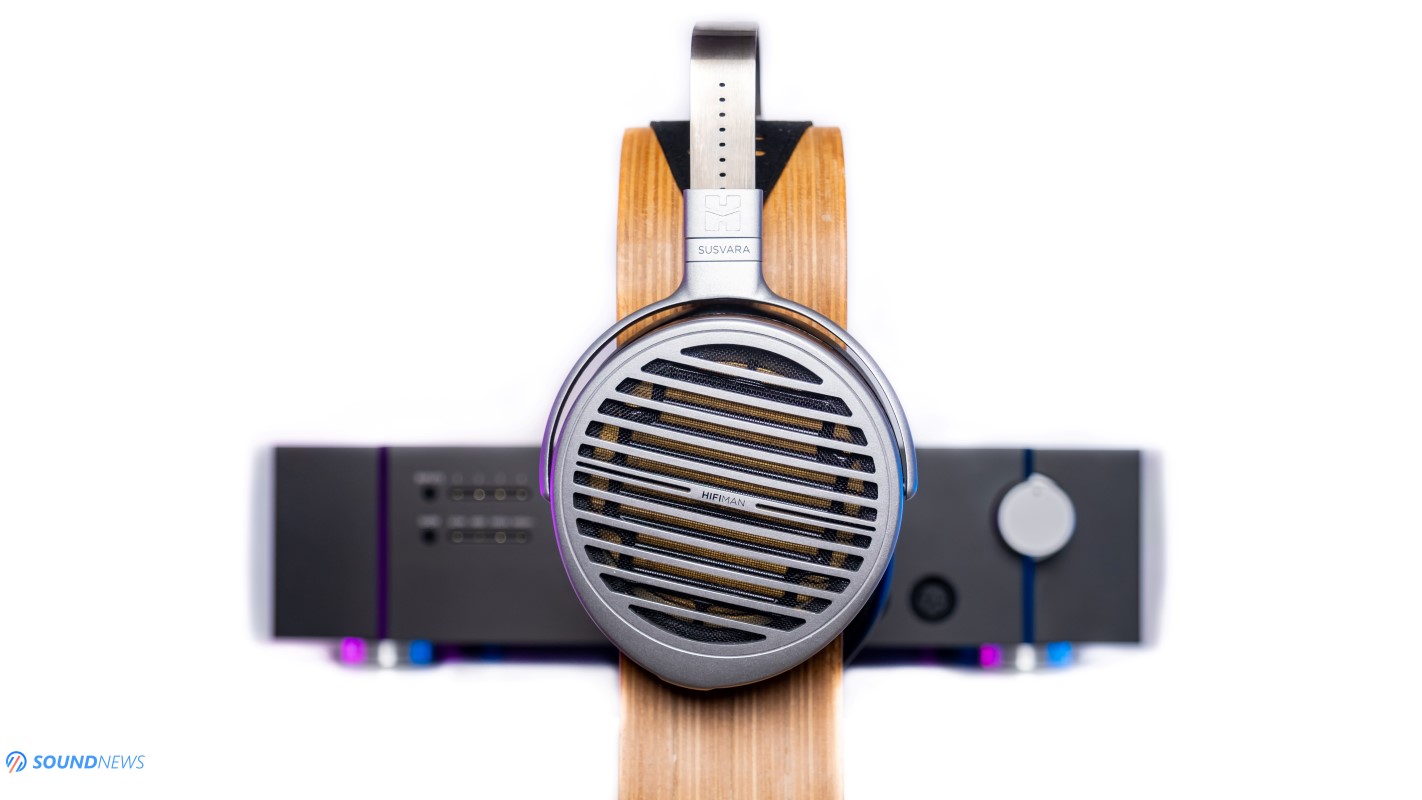
Sound Performance
I. Preliminary Impressions
Oh, how much I’ve waited for the little giant to arrive at my front door. It was two weeks first, then four, then things went south. Then another unit was sent my way and a few weeks later it arrived exactly a day before I departed for a 10-day vacation with my family. I was both excited and very sad. What was going to be a May review, transformed into an August review. Please accept my apologizes for a late Volot review, I know you’ve being waiting for it for quite a while, but hey! Let’s brighten-up a little, it’s here, it’s playing tunes for more than ten days now and I’m ready to leave my final impressions.
Do you know how to differentiate a good sounding amp from a great sounding one? If you are listening to music until 3AM several days in a row, still thinking that it’s evening outside…only great sounding amps could pull that off and that was certainly the case with the Volot being connected to a Rockna Wavelight R2R DAC…As far as headphone listening could go, it’s a dream that came true.
The very first impressions that Volot planted into my mind, was an extended soundstage size that stretched in all possible directions. This is easily the airiest, the widest and the deepest sounding solid-state amplifier that I’ve heard with my headphones. In some ways, it even rivals tube-based amplifiers for their openness and 3D layering. FA-10 was already quite impressive in here…but Volot is in another league altogether, sounding bigger in every way and you can feel that immediately with top-class open-back headphones.
Immediately after, I’ve observed how tightly controlled and effortless it was sounding compared to other amps that were sitting on my desk. I kid you not, this is the tightest sounding bass I’ve experienced with solid-state amplifiers, it’s never loose, never boomy sounding, never over-the-top…it’s just perfect. I’ve observed that it can be ruthless with aggressive music and very gentle with blues and jazz. It changes its personality depending on the music that is being played. I’ve head-banged with my electronica and rock tunes and I’ve felt cozy and warm inside with my blues and jazz collection. Immediately after, I’ve observed that it slowly but surely started blooming and showing me a higher degree of details compared to its smaller brother, FA-10. I remember mentioning that Burson Soloist 3X is slightly clearer and more detailed sounding to the FA-10, but Volot seems to be clearer than both units and it is going to win that title easily. Volot is the first transistor-based amplifier that approached dangerously close to the cleanest sounding amplifier I know, the Benchmark HPA4 and that is a very impressive feat to experience. After a few days of non-stop playback, burn-in and after trying different headphones, I understood that Flux guys tuned it slightly different to the FA-10. While FA-10 was warm and cuddly, boosting mid-bass and midrange presence, Volot went towards a more mature, reference sound, without boosting those regions as much. Don’t get me wrong, this is still a transistor-based Class-A amplifier, there is still some warmth and smoothness, but not as much as I’ve experienced out of FA-10 and Soloist 3X.
Lastly, Volot made it very clear from the start, that there aren’t headphones that it couldn’t tame. There are hundreds of headphone amplifiers on the market right now, but only very few were able to drive adequately the Abyss AB-1266, the Hifiman Susvara and the HE-6. Only adequately, because Susvara needs a lot more juice to what a regular headphone amplifier could provide, hence people driving them with integrated and power amplifiers (I’m one of them too). Many headphone amps in my possession were shutting down with Susvara, many were overheating, many were heavily clipping and only a very few could offer a decent listening experience. Flux FA-10 was one of them, but oh boy, Volot is something else entirely. With Volot, there is more volume travel, a much bigger headroom remains on tap, it sounds effortless with Susvara and always big and enveloping. A pleasant surprise was hearing a thumpy bass performance, something that only a power amplifier could usually provide. The final outcome is really simple: If you don’t want to invest into an expensive power amplifier (or two for that matter, linked in bridged more) for your Hifiman Susvara, then Volot is easily the best headphone amplifier you can get for the hardest loads as Susvara, HE-6 or AB-1266.
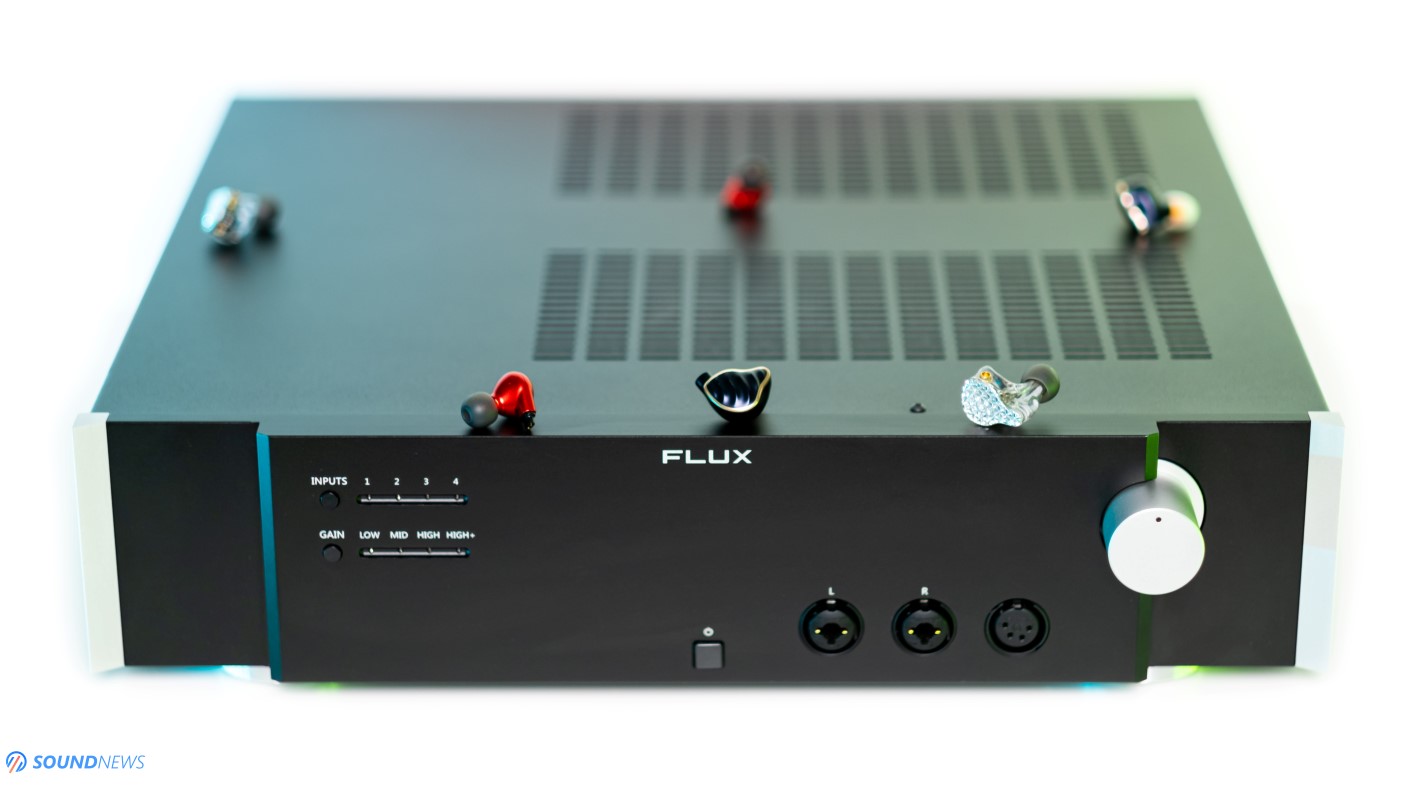
II. Background Noise & IEM compatibility
Volot is currently the most powerful headphone amplifier I know of and it wasn’t really made for easy loads as IEMs. Sixteen watts and IEMs should never be used in the same sentence, always be extra careful when mixing them together in the same bowl. Usually, Class-A amplifiers aren’t the cleanest sounding units, there would be always something crawling in the background, no matter the gain or volume level. There was a single exception to this rule: Singxer SA-1 was a real eye opener for me, thanks to an undetectable background noise even with ultra-sensitive IEMs, it worked flawlessly with them. On the other side of the book, FA-10, together with Soloist 3X worked great on the low gain, but there was a little bit of residual noise at higher volumes, enough to stir them away from IEMs listeners.
The highest sensitivity desktop headphone I have at my disposal is the Apos Caspian that I helped at its design phase and sound tuning. At 115 dB per one single milliwatt, Caspian is insanely easy to drive. I’ve immediately plugged them in, engaged the low-gain setting and to my surprise, the sound of silence paid me a visit. I’ve went past 12 O’clock, much louder to my usual listening levels and again, not even a trace of noise can be detected with this amp. I remember people complaining about a moderate hiss with several headphone amplifiers when sensitive headphones were being connected as Kennerton Gjallarhorn and Focal Stellia, but it seems that the same story wouldn’t repeat itself with the Volot. Considering the extra care that went into its power supply and filtering, I’m not surprised hearing a dead-silent performance.
As for IEMs, the most sensitive ones from my stable are the FiiO FA9. In their high-sensitivity mode, they will be providing an SPL of 113 dB with just one single milliwatt of power. Low gain and 12 O’clock proved to be (again) dead-silent. Pulling them and inserting them back, didn’t increase the noise levels, making it an outstanding proposition for IEM users. I’m happy to report that Flux Lab Acoustics outdid themselves this time around, lowering its noise levels compared to FA-10 and to its competitor amplifiers around the globe. As you can guess, any another IEM, portable or desktop headphone performed the same.
I was quite impressed by how much those tiny IEM drivers improved with the Volot, its airy and expanded presentation carried over to tiniest drivers and its ballsy and impactful attitude left a positive mark, providing an excellent control, a lightning-fast start and stop of the drivers, while fully preserving their clean and undistorted sound.
However, when I was using higher gain settings, with music on pause, some hiss would make an appearance in my tunes, but at that volume I would be destroying their tiny drivers and my hearing apparatus for good.
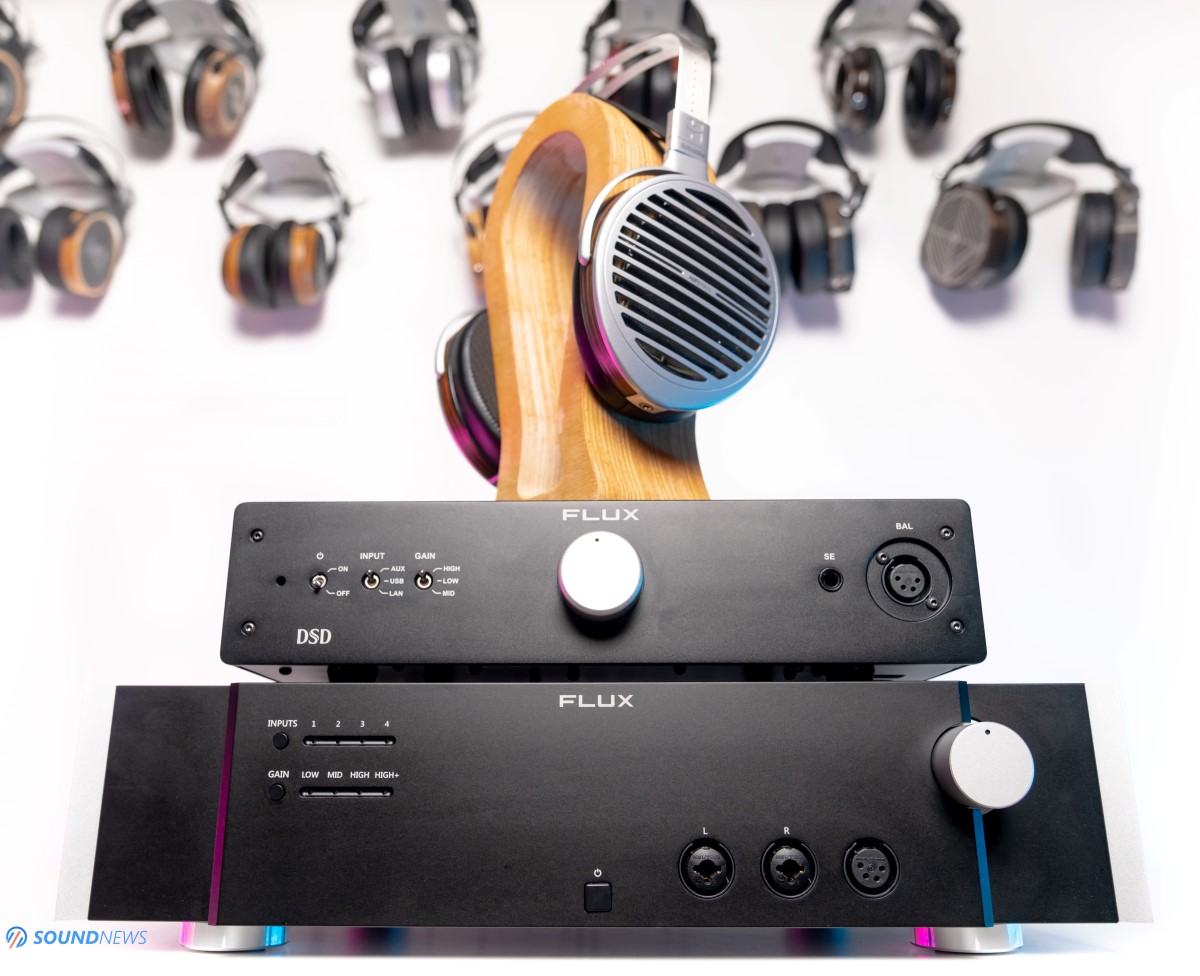
III. Power Output
Considering its sheer size, weight and of course its working mode, 16 Watts of pure Class-A power is a number that not a lot of headphone amplifiers could be proud about. Flux team blessed it with a powerful output stage, carrying an overkill capacitance and power supply filtering, Volot is without a single doubt the most powerful headphone amplifier that I’ve ever used. It’s so impressive in here that half of my headphones don’t even need mid-gain, let alone high or high+ gain settings. With every single headphone from my stable I could always rely on its power reserve; I knew that it would be offering an unlimited power with the highest headroom remaining on tap. Most of the time I was on the mid-gain position and never going past the 12 O’clock position. As you can imagine, it had an ultimate control over headphone drivers, always going in and out in a split second, always pressing the gas pedal to the floor when it comes to transients, delivering outstanding dynamics, air in the most unusual tracks, everything put on plate in a crystal-clear manner.
Volot changed a lot of my preconceptions about desktop headphone amplifiers, as several headphones that I’ve considered fully driven, were able to show higher performance numbers. It improved the sound staging capabilities of the Audeze LCD-4 and of the newest Erzetich Phobos (2021 Edition) to a whole new level. I’m not that much into tube amplifiers, but I always adored their layering and very airy and well-spread presentation. Volot decompresses the music and adds so much more air in the room, that you can easily confuse it with a high-end tube amplifier. In all fairness, all my headphones sounded bigger to a smaller or a bigger degree, depending on their limits. Its much higher power output and overkill capacitance added a high-end flair to the overall experience. I just know that I’m experiencing maximum performance out of them all. While it chooses a reference-tuning without overdoing anything in the frequency response, there is always an invisible anti-aliasing filter that removes grain and smooths out the road to your music. Some of my older blues albums could sound raw and unpolished, lacking refinement and micro-details…especially in the treble. With Volot, all those records are gaining a new meaning, it makes them alive and modern again. It boosts the tiniest nuances, the low-end delivery, it adds some weight in the midrange and a cleaner contour in the treble, like I’m listening to a remastered version of my old blues. Volot is not offering only a substantial amount of power, more important than ever it delivers clean power on the spot and its always tensioning the diaphragm of your headphones for some of the highest dynamic swings.
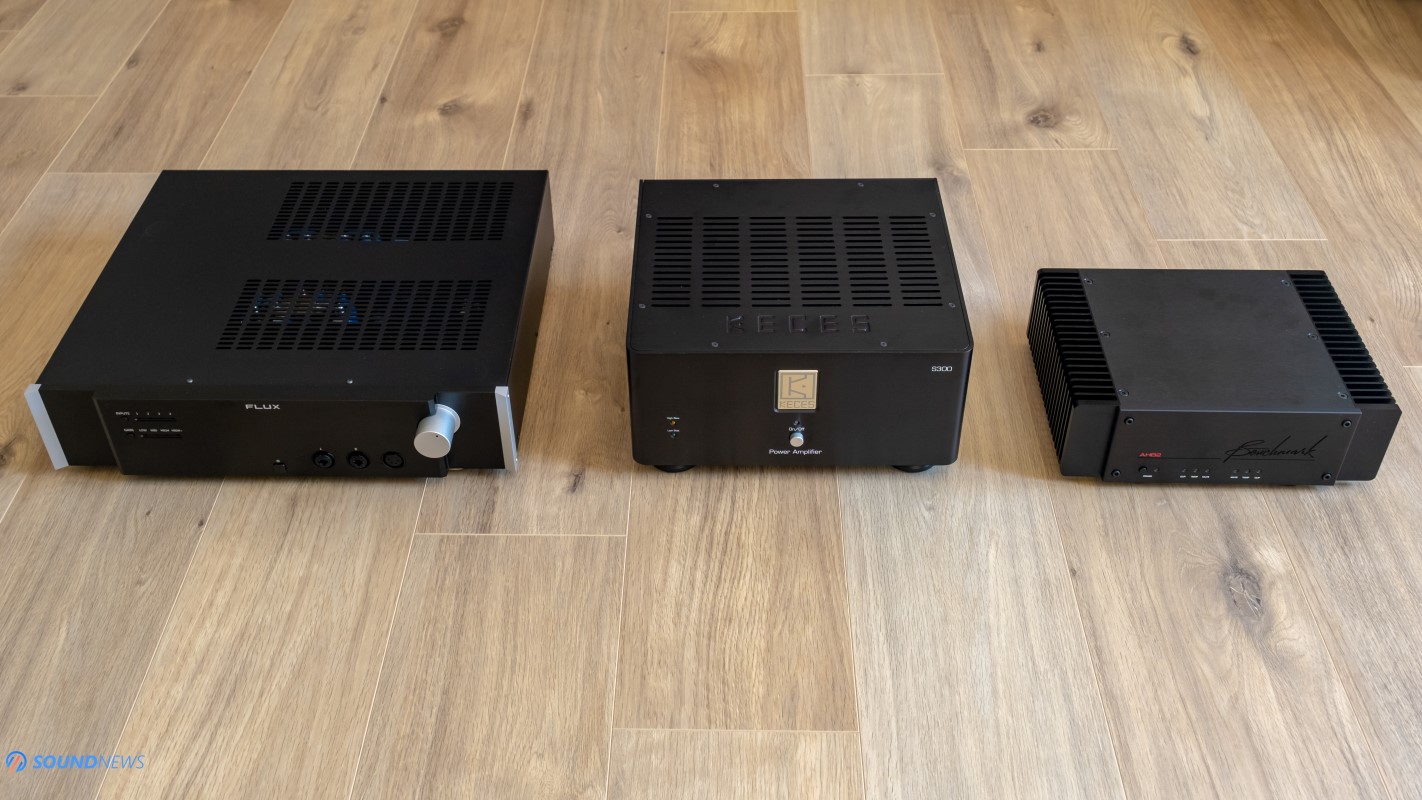
When I moved to big-league planar-mafia headphones, every single one of them bloomed and radiated positive energy, driving them all with flying colors. The newest Phobos added an additional layer of information of top and proved that it got some killer moves when electronica started playing, Kennerton Wodan added more flesh on those skinny bones, seriously boosting its midrange capabilities. Audeze LCD-4 transformed from a great, but shy sounding headphone, into a much bigger and fearless music making machines. Hifiman HE1000SE scaled too and offered the biggest soundstage of them all. However, there was a single headphone smoking nervously in the corner awaiting its turn. Before plugging it in, I’ve made sure the highest gain setting was engaged and that Volot had at least an hour of warm-up time. Hifiman Susvara is a headphone that I dislike with most headphone amplifiers, but love and cherish with integrated and power amplifiers. Susvara weren’t made for puny headphone amplifiers, the best I’ve heard out of them were with two Benchmark AHB2 power amplifiers linked in bridged mode, offering some juicy 380 Watts in 8 Ohms and 200 Watts in 16 Ohms…the sheers bass slam and dynamics coming out of them needs to be heard to be believed. I’m glad to report that Volot is so far the best headphone amp I’ve heard with Susvara, it could easily replace a power or integrated amplifier, it sounds engaging and toe-tapping, it’s dynamic and explosive. If double AHB2 power amps is out of your reach, then Volot is somewhere around ~92 to 94% from that experience. I want to be clear that Volot outperformed my own Keces S300 power amplifier (130W in 8 Ohms) when driving Susvara, it easily outperformed speaker amplifiers such as Kinki Studio EX-M7, Burson Funk, Keces E40, SMSL SA400, DA-9, Naim Unity Atom and some others. The bottom line is really simple: if you’ll never wander into dangerous territory with integrated and power amplifiers for your Susvara, Volot will be providing a similar experience without the extra hassle. It just single-handedly outperformed their FA-10, the Burson Soloist 3X, the Singxer SA-1, the Topping A90, my Benchmark HPA4, the Audio-GD Master 9 and the list continues.
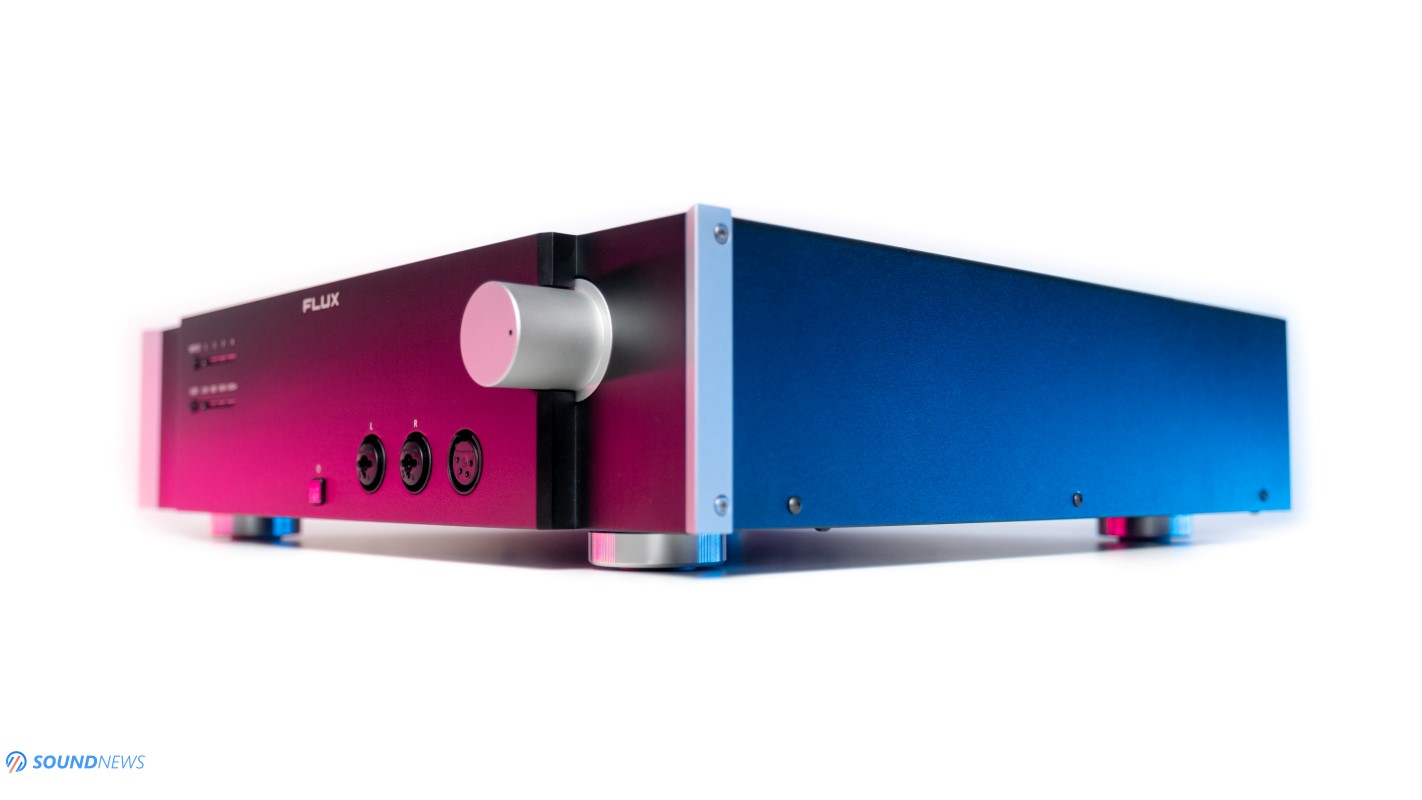
IV. Transient Response
The transient response or the combination of speed, fast decays and ultimately kick and impact are directly influenced by the power supply design, filtering stages, capacitance and power output. Volot was developed as a no-compromise solution to your over-growing headphone collection, Flux wasn’t cutting corners with it and that is precisely why it will never hold back your headphones, not a single time. Volot is a very technical sounding unit, it’s fast, it goes in and it pulls out those drivers instantly. Every single time I was engaging it, an overwhelming feeling of “this is the maximum my headphones are capable of” always would pop-up sooner or later. I really don’t want to use some of the biggest words in here, but Volot can’t be slowed down and it will never limit the dynamics of your headphones, with the exception of Hifiman Susvara that could still be improved upon.
When they lowered its distortion and noise level to inaudible levels, they unleashed the beast within. Power is nothing without control and refinement and this is where they spent most of the time, hammering the flaws of its founding fathers and delivering something truly special.
When electronica would start playing, Volot would be raising its fists high, so prepare your ears for an audiophile beating. While I truly enjoy the Susvara out of it, there is something that drags me towards the Audeze LCD-4. Hard to explain, something just clicks with them, with some particular music I no longer want to analyze my music, just lean back and enjoy the hell out of it. Volot boosted the good parts of the LCD-4 and made them truly shine. I adored their depth, but always felt that its soundstage and bass control could be further improved. Volot worked as a blue pill for them, finally puling the last percentage of performance out of them. What was deep and impactful, it now big, enveloping and tightly controlled. LCD-4 kicked and pounded with a higher force that after two hours of non-stop action, I needed some time alone. Volot adds a lot of energy and life even in headphones that aren’t that alive and fun sounding. All the entry level Hifiman transformed into something more engaging, they were no longer soulless silent assassins, that try to be technical and accurate, but never fun or relaxing. Volot color-corrected their midrange, added weight and saturation where there was none. I believe this is one of the most technical and highly dynamic headphone amplifier that I’ve listened to.
While other amps were seriously impressive when it comes to bass quantity and sheer slam, Volot had a different approach. It added a lot more control, offered an iron grip over the low-end and I could better feel the quality of the bass. There isn’t a point even mentioning NFCA, or THX-AAA amplifiers, as I consider the Volot playing in a (much) higher league when it comes to transients. It’s not only highly technical, fast and good slamming, but it’s also enjoyable and organic sounding at all times. I’ve called their FA-10 a transient response monster, because at that time it felt unchallenged and unbeatable. Volot…is a different beast, a much scarier one and if you are hunting for dynamics and for the highest peaks, it will never disappoint. Chapeau Bas! It moved me literally and figuratively while listening to it and I wish all amplifiers would sound the same. I’m wondering why they didn’t add a dark green color variant to such a unit, as sometimes it felt like putting Hulk on a drum kit…
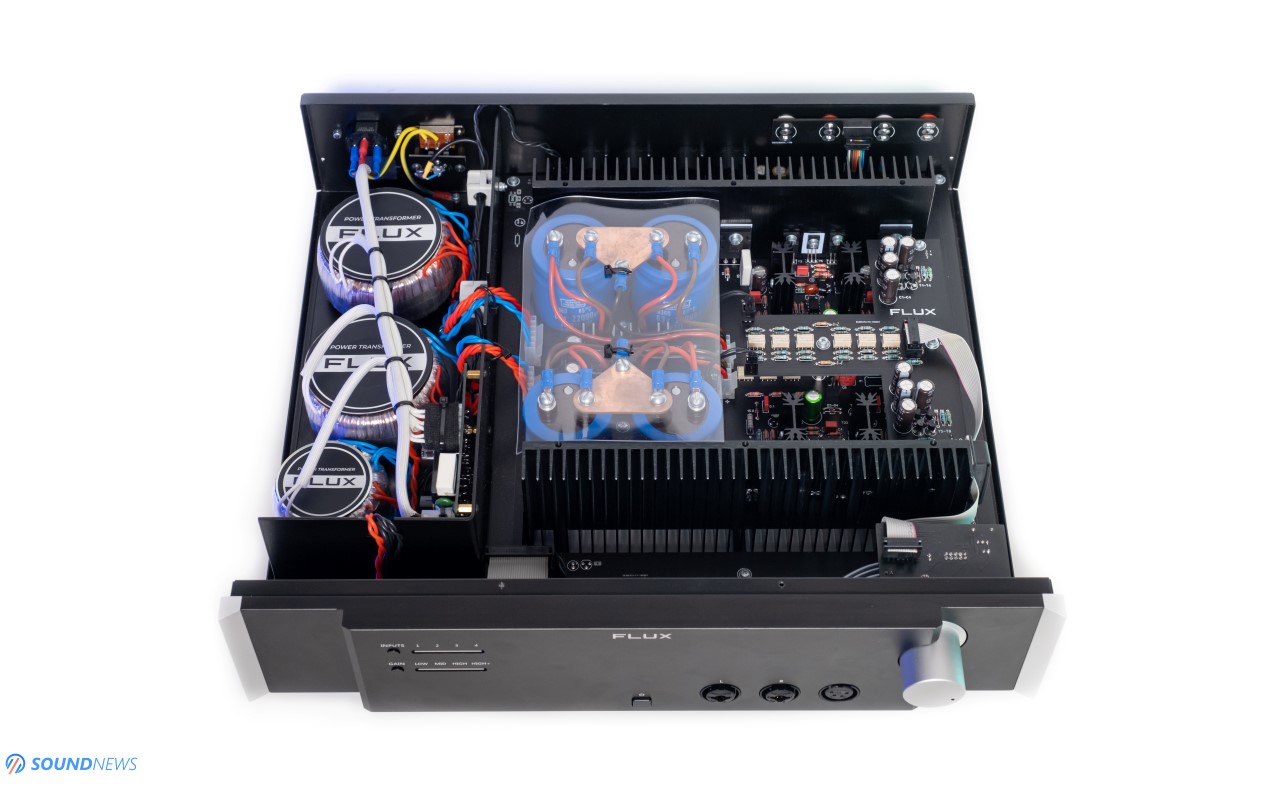
V. Soundstage & Depth
Volot proved itself not only as the most powerful unit money could buy, but also as one of the airiest sounding solid-state amplifiers. Transistor-based amplifiers always sounded bigger compared to their op-amp based brethren and if we go half a century back, transistors were made to replicate the behavior and sound of vacuum tubes.
Even without any burn-in and without leaving it warm-up a little bit, Volot was already showing me some potential that is hiding under its hood. It sounded exceptionally wide even starting with the first minutes. When I’m listening to something new, the very first minutes are the most crucial, because my mind didn’t accommodate the new sound yet, so every thought that pops-up is a very powerful one. A few days later, the sound wouldn’t be as different, as not only the gear is burning-in, but also our minds are accommodating the new sound signature.
There’s always a strong correlation between a big capacitance and soundstage size on all axes. When more air is being pushed in the low-end, you can immediately feel that the sounds are being decompressed and stress-relieved. They no longer decay in an instant and they are no longer hitting an imaginary wall at some point, Volot lets them fly around, making you a spectator for the show that follows. I’ve tried plenty of Class-A amplifiers by now, some of them really moved me and some not so much, but most of them improved the air travel around my head. I’m very comfortable saying that when it comes to imaging, note positioning and air travel, Volot outperformed the said units. The air bubbles where all the sounds are happening increased in size, sounds were going way past my shoulder level, even semi-open, closed-back and IEMs were improved to unrecognizable. It is still not quite on the same level with high-end tube-based amplifiers, but this is as close as it can get to that particular sound. I wish I could tone down a bit my enthusiasm level for this unit, but there is no other way in saying it that Volot is an open-sounding amplifier, it isn’t shy when it comes to scale and no matter the song that I’ve played; soundstage was always spot on.
What’s more interesting to this story, is that even 2 pieces of Benchmark AHB2 put in bridged mode (that’s a $6000 setup) weren’t sounding bigger to a single Volot. Those were snappier and harder slamming thanks to the power coming out of their speaker taps, but as far as air travel and depth is being concerned, Volot was reigning supreme as no other headphone amp, integrated or power amplifier could take its place.
Midnight Blue (Remastered) by Kenny Burell (Qobuz / Tidal) is a record that I’m usually listening late night, as it always puts a spell of on me and stops me from doing anything. The left to right play always flexes my mind a little, there are so many things happening around me and yet there is a strict order in all that chaos with the right amplifier. Sounds are coming in peace and are never fighting for prime time; I know that every single one will shine bright when their time comes. Unusual to blues albums of that era, the record didn’t include a piano player and that somehow added to the atmosphere and relaxation. You can immediately feel that Kenny builds intensity much slower, things aren’t taking off in the first minutes of play. The very first tracks felt like a prelude to the brilliance of what’s to come. Volot slowed down its pace drastically and what was a bully with my electronica and rock, transformed into a true gentleman, smoothing out the rough edges, adding relaxation and peace of mind.
Bottom line is that Volot will be adjusting to your tunes and to your headphones. It will sound big and extended, separating the notes from each other with well-mastered music and vice versa, decreasing the room size, pushing you closer to the music, creating an intimate performance with some other tunes. It can pump dopamine with electronica and rock and relax you completely with smoother jazz and blues. I didn’t feel for a moment that it was limiting all my headphones in any way and that is all you need to know about it.
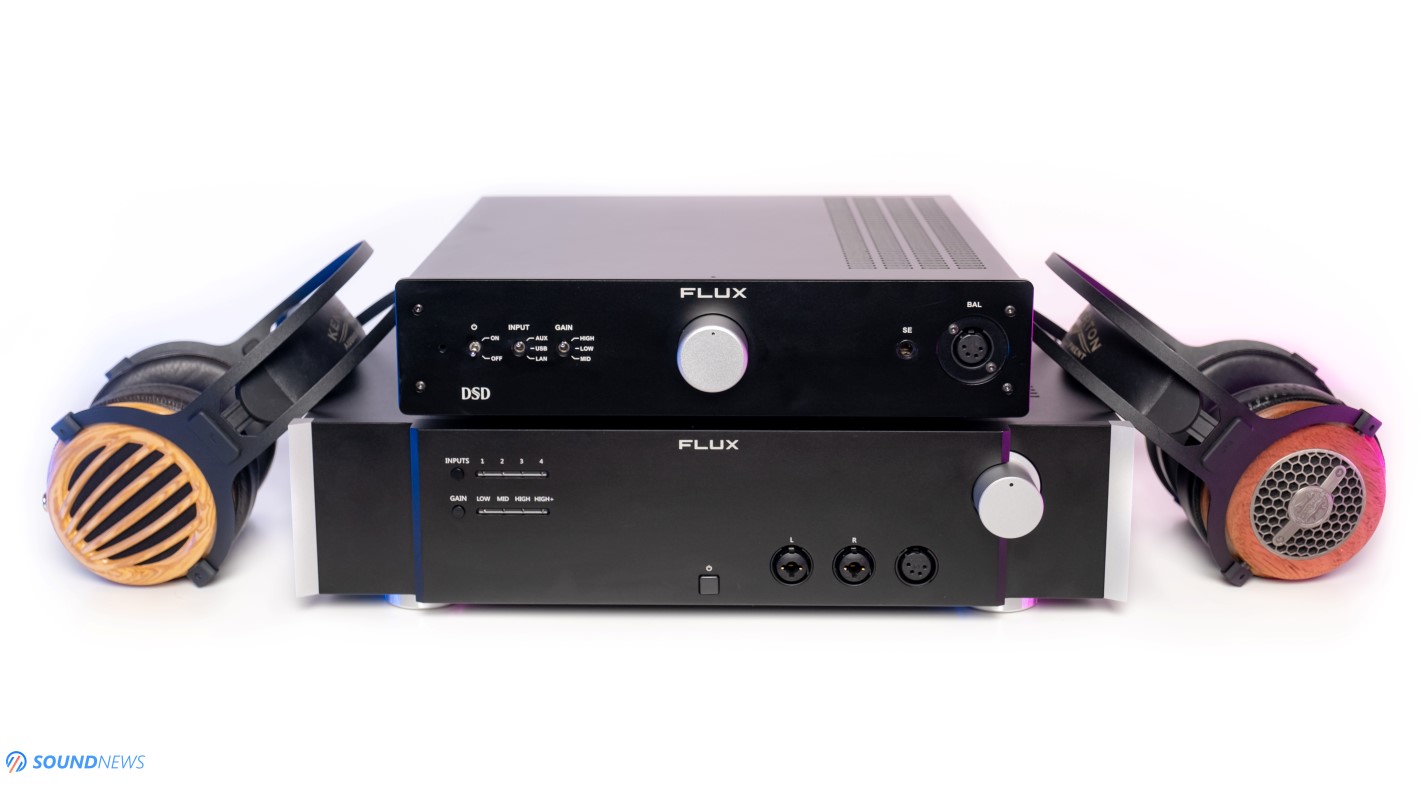
VI. Resolution & Transparency
By employing an over-engineered power supply and filtering stage, by completely separating all that from the analog circuitry, by dropping the noise floor to inaudible levels, by using more & higher precision analog relays and higher quality components throughout the entire circuit, the Flux team squeezed a higher degree of transparency out of this unit, seriously boosting signal-to-noise-ratio and ultimately its detail retrieval. I’ve tried quite a few class-A amplifiers by now and there’s not a single doubt in my mind that Volot outperformed them as far as cleanness is being concerned. It’s important to mention that it doesn’t feel exaggerated and all those details aren’t shoved into your skull so aggressively as NFCA or THX-AAA amplifiers are doing. Volot is more subtle, less aggressive in a way…but it’s not exactly on the same level with something like a Benchmark HPA4.
It lightly surpassed the Burson Soloist 3X and the Singxer SA-1 that I’ve found to be mighty impressive in this department. It isn’t much clearer sounding than those units, but enough to be felt with higher-tiered headphones such as Audeze LCD-4, Hifiman HE1000SE and Susvara.
Going through a huge music collection and covering a wide range of musical genres, I can safely say that it chooses to have a see-through transparency and a high resolution even way past top-octave. Did I hear few additional nuances compared to the amps that I’ve mentioned before? Sure, I did and all that was presented in a very relaxed and non-aggressive way. I particularly liked its top-end delivery that was extremely clean and outlined, but was never dry or bothering in the long run. There is really not point for me going through a few tracks just to arrive at the same conclusion that at its core, Volot is a clean and transparent sounding amplifier.
While being clean and detailed, it never forced me you to look at those tiny details, that was always an option of mine: to focus and hear all that loud and clear, or to relax my body and have a great time. Snare drum hits, hi-hats and cymbal crashes stood out immediately with their metallic, but natural texture, without adding ringing or shrillness that several amps were putting on a plate so bravely.
I have a higher respect for units that aren’t hiding away the ultimate truth, that aren’t trying to beatify my music in any way, that show everything there is to hear in a brutally honest way and I can easily add the Volot in this short list.
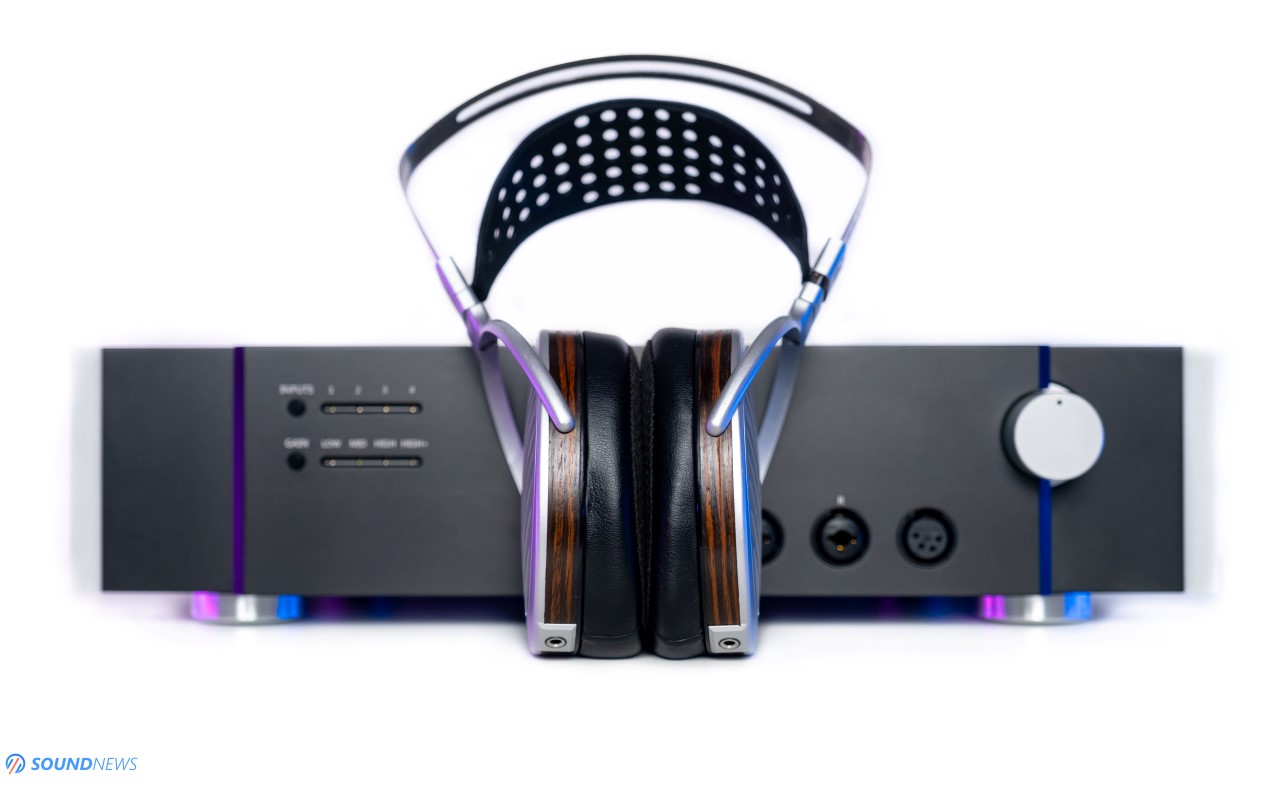
VII. Frequency Response
Flux Lab Acoustics didn’t want to make it warm or thin sounding, they didn’t want it to color your music in any way. It has a different tonality to their FA-10 and I’m being told that this is their only unit that chooses honesty and a reference tonality over anything else. They made it as clear as possible, without drafting it towards warmth or brightness. Volot isn’t adding a few dB anywhere in the FR, but it boosts the whole FR by adding contour, definition and texture where there isn’t that much. I would be surprised hearing anything less than perfect out of such an oversized unit.
A. Bass
If you’re hunting for deep rumbling bass, that has plenty of texture, that is weighty and free from nasty distortions, then from the entire army of headphone amplifiers you should focus your attention only on all-discrete transistor-based units biased into Class-A…those always stood out brightly from the crowd, reeking bad attitude and boldness. When it comes to bass, I’m yet to hear a more impressive headamp than their own FA-10, Burson Soloist 3X, Audio-GD D38 and Kinki THR-1. Compared to them all, Volot adds a nicer control down to the lowest notes, it fires all that energy as a canon towards the listener if the music is asking for it. Those huge caps improved its bass delivery and added a layer of refinement and control. What was raw around the edges with FA-10 sounded a lot more polished, mature and fine-tuned with Volot. Since getting the Volot on-board I’m going to sleep at 3AM and I’m getting up much later…it just wants me to re-discover the lost bass energy, layers and depth in all my tunes. There isn’t a musical genre that I didn’t try with it, I would always discover additional layers of bass compared to my own amplifier. Volot is not only powerful in the bass, but also highly detailed in here and it’s a big departure from their FA-10 when bass quality is being concerned. Thanks to an immaculate bass reproduction down to the smallest nuances, it somehow begged me trying more and more headphones with it.
B. Midrange
Volot uses some of the cleanest sounding transistors and those are Toshiba bipolar, so don’t except a lot of creaminess and warmth out of this unit. It got a natural tonality and a little bit of warmth, but not too much of it. It is still fuller and richer sounding to all NFCA and THX-AAA amplifiers, but not as much as Mosfet or JFet based amplifiers are sounding. When Flux Lab Acoustics started its development cycle, I’ve hinted several times that they need to go towards a more mature, reference sound tuning and I’m glad they went into this direction. Worry not, you’ll still find the vocal performance outstanding, it perfectly captured the pitch of the human voice and more importantly it could sustain a longer decay of organ or piano notes. I have a small fetish of listening to folk-rock that I’ve grown with, those tracks are filled with midrange presence and if I’m not getting goose bumps with those tracks, then something is gravely missing. A minute didn’t pass and Volot was already injecting a healthy dose of dopamine, sending shivers through my spine and goose bumps towards my hands. Volot is still a straight as a line and a very linear amplifier and it feels like a big departure to their FA-10 that I still have around me. I wouldn’t describe it as very warm or extremely meaty sounding, it appears as organic and life-like more than anything else, it is more about being honest, never getting in the way of the musical signal. Midrange comes only in right doses, without hinting towards thinness or listening fatigue.
C. Treble
Sometimes with a highlighted and detailed treble presentation, unwillingly some strings are being attached. Some amp builders are boosting the top-end by making you think it’s a clearer sounding unit, but they could never deal with the brightness and listening fatigue that would follow. Only on rare occasions, when distortion is going down to undetectable levels, a higher treble presence would not equal a high-discomfort or treble ringing that was certainly the case with the Volot. It sounds clearer and more detailed to most all-discrete amplifiers I’ve heard in the past, yet it never adds nasty brightness or fatigue. I’m very much into all kinds of raw and unpolished music, underground music is also my thing, some of those guys don’t have funds for proper masters and with a wrong setup, that could be unlistenable.
Volot is one ugly dude when it comes to personality, mesmerizing the crowd with his tough-guy antics and Rambo style rib-sticking attacks, its a two-headed and a stubborn fellow when it comes to punchy dynamics, but it’s a completely different animal, a much calmer one when it comes to getting things right in the frequency response. Yep, there is definition, there is as much detail as you could possibly desire, there is presence starting with lower-treble and finishing with the top octave, but there is one thing that is completely missing from this picture: clenched teeth or a so-called listening fatigue. Fancy for a 2 hour listening sessions with a pack of cigarettes and a bottle of aged whisky near you, how about a 4-hour listening marathon searching for the second bottle? Volot will take it and will never bother you in the slightest with its tonality. Its rich, full-bodied, showing its personality depending on the music that is being played.
VIII. Comparisons
I will not be comparing the Volot with a lot of units because it is much bigger, heavier, more powerful and considerably more expensive to most of them and that’s why I decided to focus only on two particular units. I know that the FA-10 users might be asking themselves if Volot can be seen as a potential upgrade so I decided to compare them using only two of the hardest to drive headphones I have at my disposal, so let’s get this party started.
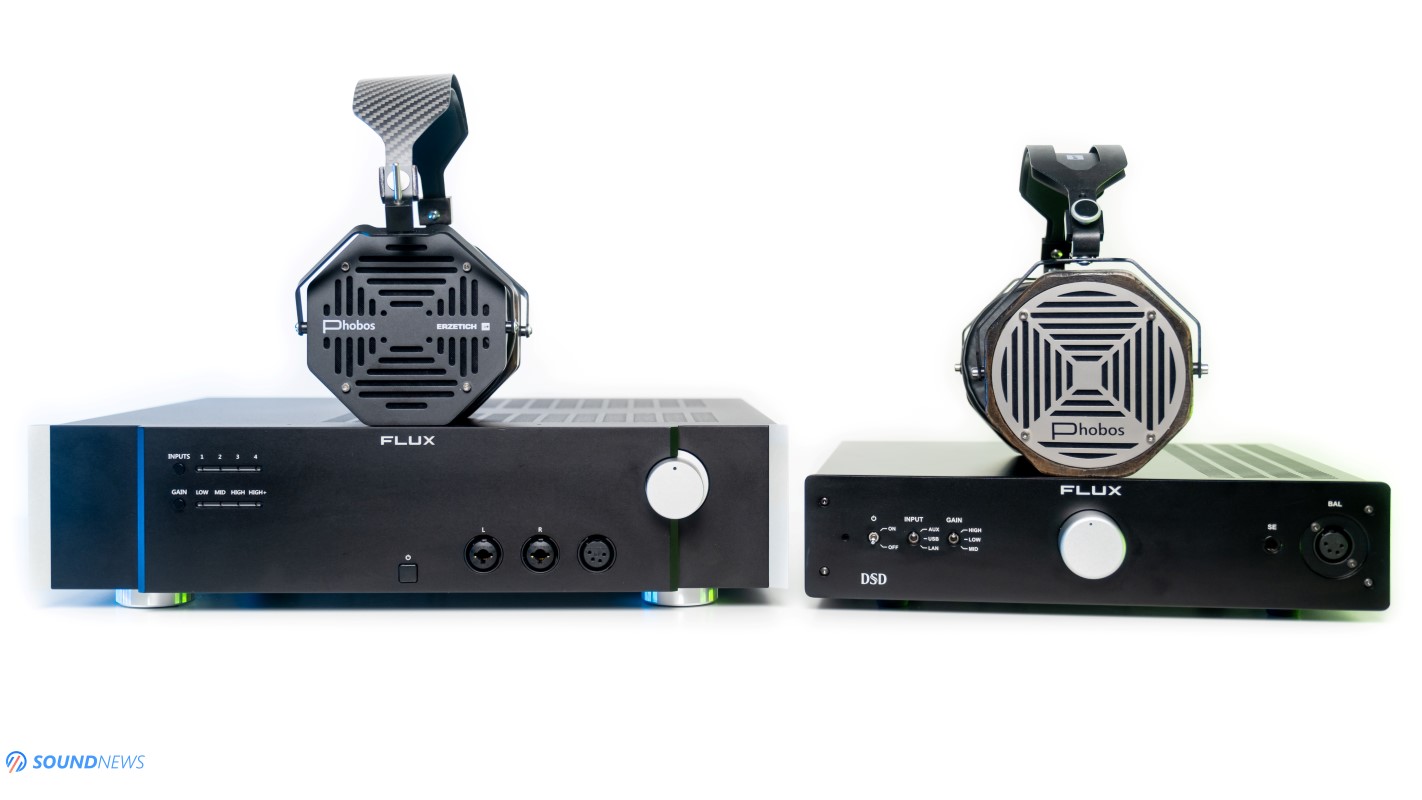
A. Flux Lab Acoustics VOLOT ($2549) VS Flux Lab Acoustics FA-10 ($749)
You can immediately feel a strong family resemblance with both units on the table. Matte-black everything, with silver volume pots and bent cases that are wrapping them entirely…feels very similar. In spite of everything, Volot screams a higher build quality whenever you look. It uses a much thicker front panel, some higher quality connectors and IEC inlets, a nicer volume wheel that isn’t that easy to turn and some of the nicest metal feet I’ve seen on headphone amplifiers. It looks more serious and more polished, to some that matters more than a little.
Volot is winning quite a lot of ground when it comes to connectivity, it actually doubled the number of inputs and outputs compared to the FA-10, plus two pairs of XLR inputs is something that I’ve been begging headphone amplifier makers for quite some time and finally somebody responded to my call.
On the inside things are getting a lot more interesting. While you’ll see the same number of transistors and the raw power output might look the same, there is a lot more to it. Its power supply design is over the top and so its capacitance that could store several times the power of the FA-10. What was a strong nine out of ten of the FA-10, was dialed up to eleven on the Volot. It is really the pure definition of overkill in every way and it’s something you don’t see very often with headphone amplifiers. Volot delivers a lot more current and it can store more of it, so obviously power delivery is far from being the same with its little brother FA-10.
Sound quality wise, with Hifiman Susvara, using very specific tracks, FA-10 could enter its protection mode and shut down for a few seconds, something that never happened with the Volot. Not only that but FA-10 was unable to deliver the quantity, nor the quality of the bass that I was looking for with Susvara. If Hifiman’s best creation were driven at a solid 7 out of 10 with the FA-10, Volot drove easily at a 9 out of 10. Everything felt more impressive on the Volot, but especially detail retrieval, dynamics and air travel. Volot was clearer, it offered more information, it sounded more alive and dynamic, while spreading the sounds much farther away compared to FA-10. While FA-10 wanted to inject some midrange presence into the mix, Volot felt more accurate and truer to the recording, never staying in front of the music. Biggest and most notable differences were felt with Hifiman Susvara that are difficult to tame and are currently my truth tellers, as nothing could pass through them unnoticed. In terms of dynamics and sheer punch and impact, my electronica music collection sounded fine on the FA-10… but something was left to be desired, I couldn’t feel the whole body of the bass notes and notes felt shallower and not as outlined. Music was emptier sounding and less vivid or visceral. When Volot entered the stage, it added more body and weight, more meaning to all those tracks. It made the low-end jumpier and more present in my music, it added muscle mass, flow and most importantly it made them sound effortless, leaving a ton of headroom on tap. I’ll remind you once again, that if you already own the Hifiman Susvara and want the best headphone amplifier for it without wandering towards integrated and power amplifiers, then Volot seems to be your best option right now.
When I moved to Audeze LCD-4, Kennerton Wodan and Erzetich Phobos (2021 Edition) the difference between the two…wasn’t as big anymore. They both had an ultimate control, lots of power to spare, a very thumpy bass performance, both sounded fast and impactful…but there was still a difference. In any setup and with any headphone attached to it, Volot sounded considerably wider and taller, while putting on the plate more nuances and micro-details. With every headphone except for Susvara, you’ll hear those very important traits and that is why Volot could feel like a FA-10 on steroids.
There is also a small difference in tonality between the two, FA-10 adds a little bit more midrange warmth and sometimes bass quantity, elevating it from neutrality, while Volot does that on a much lower scale, sitting much closer to my linearity curve. FA-10 wants to be fun, wild and rebel, while Volot wants to be precise and correct in its math.
Performance wise, Volot cannot be 3.4 times better as its price might suggest, but it is certainly a better sounding unit. How much better, really depends on your source, on your material and on your headphones. Some headphones would be scaling crazily high with the Volot, while others might show you just a minor upgrade. Some diaphragms just don’t need as much power, control and cleanness and that’s why you should consider the Volot only if you own at least two or three high-end pairs of headphones.
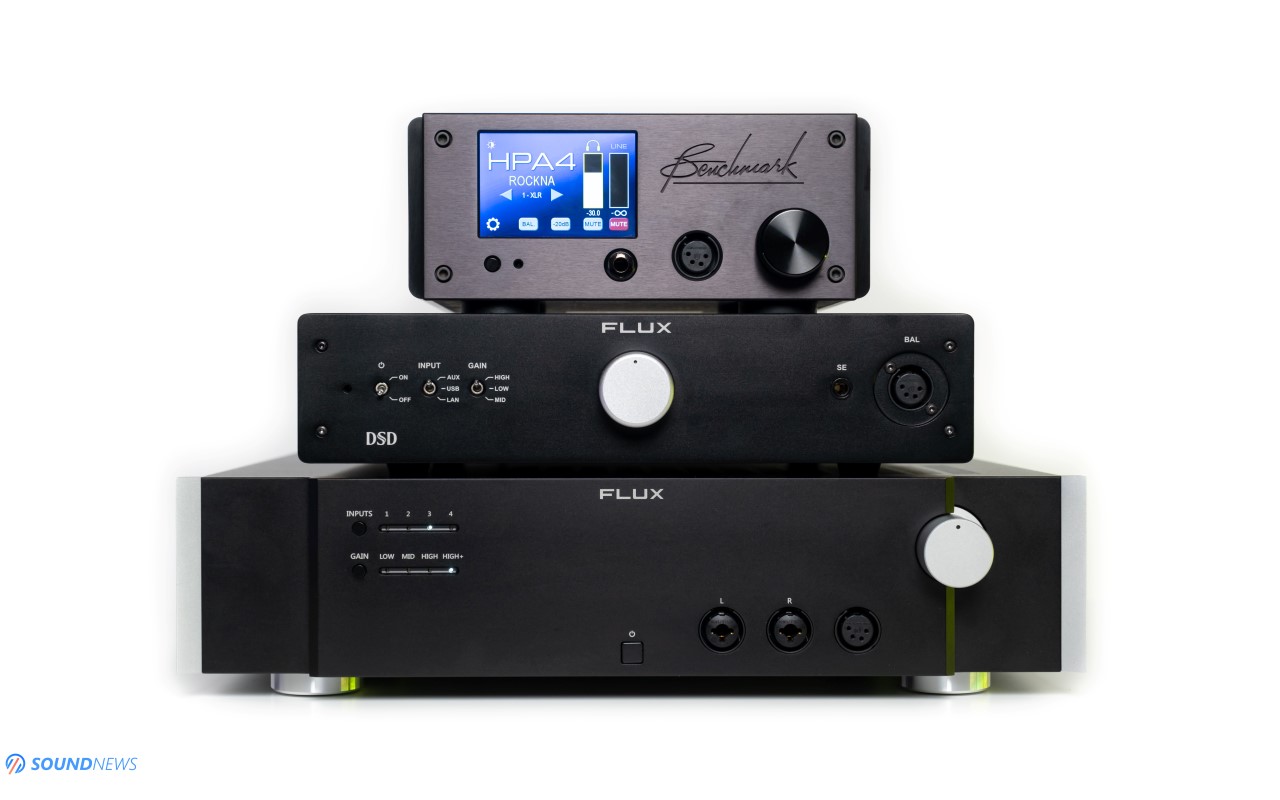
B. Flux Lab Acoustics VOLOT ($2549) VS Benchmark HPA4 ($3000)
I’ll tell you this: Volot occupies 4 times the surface area of the HPA4, it is almost 4 times heavier and it consumes 4 times the power of HPA4 from the wall. Putting them near each other is like putting David near its arch nemesis Goliath. With all this said, HPA4 has a nicer build quality, it uses a CNC machined case, it’s loaded with an awesome touch-screen and remote control, plus it’s the best preamplifier I’ve ever heard in my loudspeaker setup. HPA4 is more than a simple headphone amplifier, hence a difference in price.
However, when talking about headphone amplification duties, this is where Volot takes a very serious leap forward. Armed with 16 juicy watts in 32 Ohms…it feels lot more powerful to just 6 Watts in 16 Ohms of the HPA4, that would halve its power in 32 Ohms. Realistically speaking, Volot offers a little bit more than 5 times the power of the HPA4 and that can be immediately felt while listening to both units.
With Hifiman Susvara, I am almost maxed out on the HPA4, I’m shy of 4dB until I’m hitting its power threshold. HPA4 is an amplifier that has the most protection circuits, but it is really annoying when it shuts down on every 4-th track or so. When higher dynamic range tracks were hitting my playlist, I started to worry if HPA4 is going to shut down or not. It couldn’t handle crowded music with Susvara and longer bass notes would always turn it off. On a very serious note, HPA4 is an outstanding headphone amplifier…just not with the Hifiman Susvara. Hifiman’s best aren’t impressive on this unit, I can only hear an impressive transparency that outperforms even that of the Volot, but everything else felt less impressive, less involving and ultimately less engaging and alive. Dynamics weren’t going up and down with HPA4, bass and midrange weren’t vivid and more like…emotionless to me. Soundstage felt closed-in, to the point of being claustrophobic, as everything sounded cozier and much smaller in size. Volot played everything on a higher level, music started to breathe, it just floated much easier with it. It added a much wider and taller stage, the whole image increased in size.
The substantial power increase, made it jumpier and more controlled. Everything felt tighter, snappier, dynamics were punchier, it went faster and all that felt extremely secure. Volot was a total delight with my rock and electronica tunes, something that HPA4 couldn’t live up to.
When I moved to much easier loads, the difference would be much smaller and sometimes I could pick the HPA4 or the Volot as my weapons of choice. What was again clear from the start is that no matter the headphone, Volot would just push more air around those notes and add a little bit more soul. HPA4 is always serious sounding, never adding warmth or smoothness, it could be beneficial to some headphones, or detrimental with others.
All my higher tiered headphones sounded more interesting, more special, more unique in a way with the Volot and sometimes robotic and too linear with the HPA4. It really depends on your needs, on your preference and on the rest of your setup, but Volot could be paired much easier with linear sources, something that HPA4 can’t do as good. If you own a large headphone collection and you want to drive every single one, including monstrosities as Susvara and AB-1266, then in my eyes Volot seems like a better option.
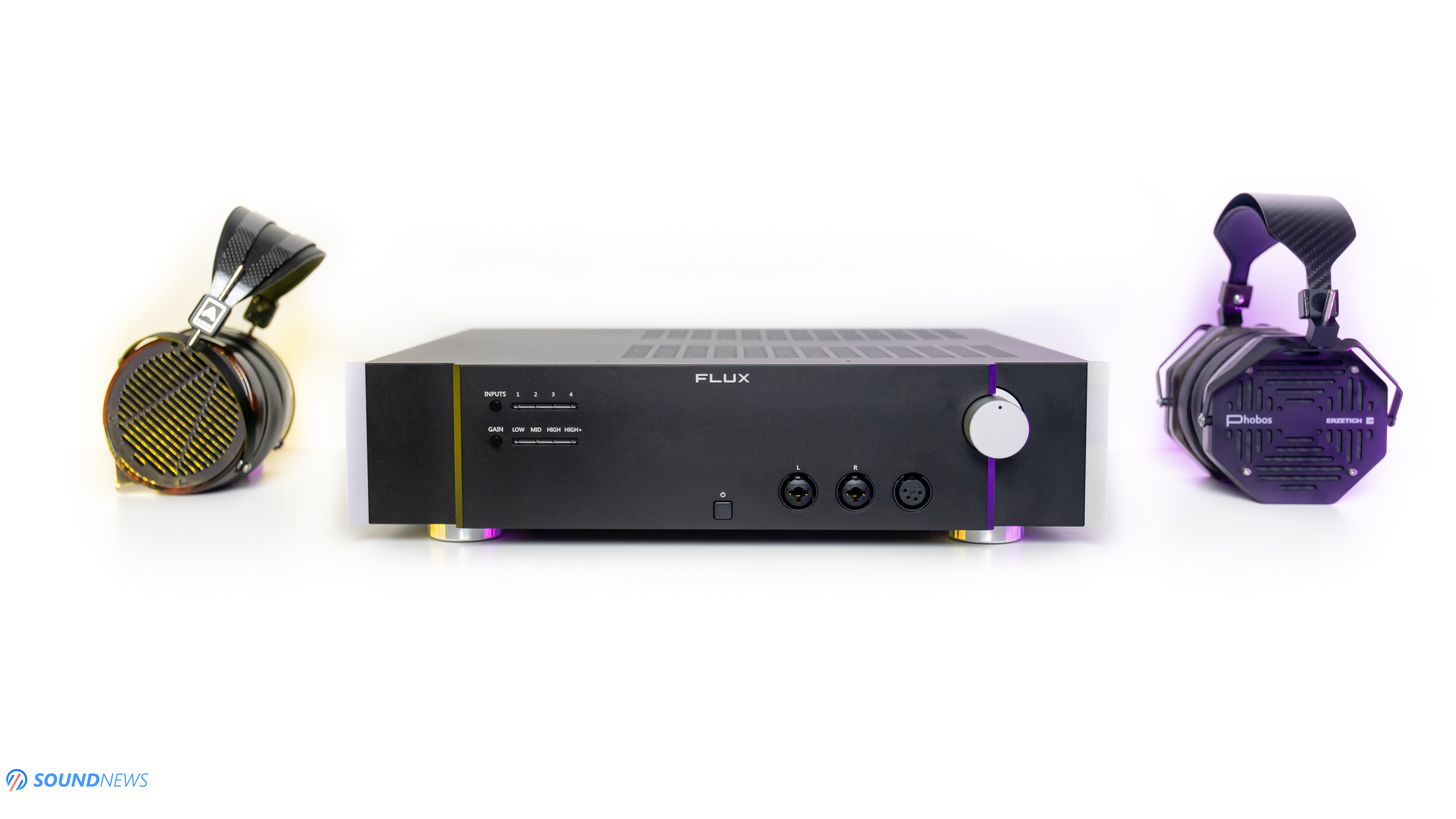
Conclusion
Wrapping things up, Volot turns heads the first minute you see it and puts butterflies in your stomach the first minute you are listening to it. It just cemented itself as the cleanest, the most brutally-honest class-A amplifier I’ve experienced so far and it completely discarded the character of its founding fathers.
Volot checks a lot of boxes, too many of them, but it isn’t for everyone. If you hunting for plenty of warmth and for the creamiest midrange presence and if you crave only for smoothness and for a complete relaxation of body and mind, you might look towards big tube-based amplifiers. Volot is a two headed titan in the same body, it could behave as Bruce Banner and the next second it smashes and pounds like Hulk put on a drum kit. To me, Volot seems like the most-universal amplifier on the market right now, as it could easily drive the most sensitive to the hardest loads, with a wide smile on its metallic face. Out of all headphone amplifiers that I’ve heard up to this point, it’s the one that improved and elevated the Hifiman Susvara to the next level. It made them highly enjoyable, it added bass definition and weight, it added some soul and midrange presence, while keeping at bay all the treble ringing. If you don’t want to venture towards highly-dangerous territory with integrated and power amplifiers driving your Susvara, then this is as good as it can get with headphone amplifiers.
Volot made my music bigger, wider, airier and way deeper sounding, it really improved every single headphone from my stable, some were only marginally better, while others spread their wings and kick-started my imagination. This is a new reference to which all future Class-A amplifiers should be compared to and this is precisely why it’s the very first headphone amplifier to receive our prestigious Gold Award.

It felt like a tasty, well-balanced audiophile cocktail with a perfect dose of flavor and after taste and the only thing remained to do is congratulate the Flux lab acoustics team for a perfect dose of musicality and technicalities.
As a high-end unit, Volot will cost you a pretty penny, more exactly $2549 plus shipping and you can get it only directly from their web-store right here.
If you get one, please come back and leave a comment below. I’m curious to know how it works with your headphones.
PROS:
- Massive, bold, old-school look
- High quality connectors and metal feet
- Rock solid build-quality
- Two pairs of XLR inputs is a huge problem solver for me
- If you are searching for ultimate power and control, you came to the right place. There isn’t a headphone it can’t tame
- Sounds unstrained and effortless, never running out of steam
- Transparent, clean and extremely detailed sounding
- Probably the widest and the deepest stage I’ve experienced out of solid-state amplifiers. Has no bounds or borders with high-end open-back headphones
- Excellent imaging and pin-point location of the notes
- Extended frequency response at both ends, goes for a neutral sound signature
- Noiseless on the low-gain position, could be used with the most sensitive desktop headphones and IEMs.
- Outstanding pace, rhythm and timing, great transient response
- Sounds linear and honest for most part, tilting towards warmth and naturalness
- An ultimate headphone amplifier for your growing headphone collection
CONS:
- Colossal size and weight, occupies a big portion of my office desk
- Should be used only in well ventilated spaces without blocking its air vents
ASSOCIATED EQUIPMENT:
- DACs: Rockna Wavelight, Audiobyte HydraVox & HydraZap, Musician Aquarius, Matrix Audio Element X, Gold Note DS-10 Plus & PSU-10 Evo, Gustard X26 PRO, X16, Topping D90SE, SMSL D1SE
- DAPs: FiiO M11 Plus LTD, M15, Shanling M8, M6 (21), M3X
- Headphone Amps: Flux Lab Acoustics Volot, FCN-10, Benchmark HPA4, Singxer SA-1, Burson Soloist 3X, Musician Andromeda, SMSL SP400, Topping A90, Gustard H16 & others
- Preamps: Benchmark HPA4, Topping PRE90
- Power Amps: Benchmark AHB2 in bridged mode (x2), KECES S300, SMSL SA400
- Loudspeakers: KEF Reference 3, Natural Sound NS-17
- IEMs: FiiO FA9, FH7, FH5S, FD5, Meze Rai Penta, Rai Solo, LittleDot Cu KIS, Hiby Crystal 6 & others
- Portable headphones: Sennheiser Momentum 2, Meze 99 Classics
- Full-sized headphones: Apos Caspian, Hifiman Susvara, HE1000SE, Arya, HE400SE, Audeze LCD-4, Erzetich Phobos, Erzetich Mania, Kennerton Wodan, Magni, Gjallarhorn, Vali, M12S, Ollo S4X Reference, Sendy AIVA & others
- Interconnects: QED Reference (x2), Topping TCX1 (x2)
- Speaker cables: Kimber PR8, Audioquest Type4
- Power Cables: Isotek EVO3 Premier (x3)
- Balanced Isolation Power Conditioners: PLiXiR Elite BAC1500, Elite BAC400
